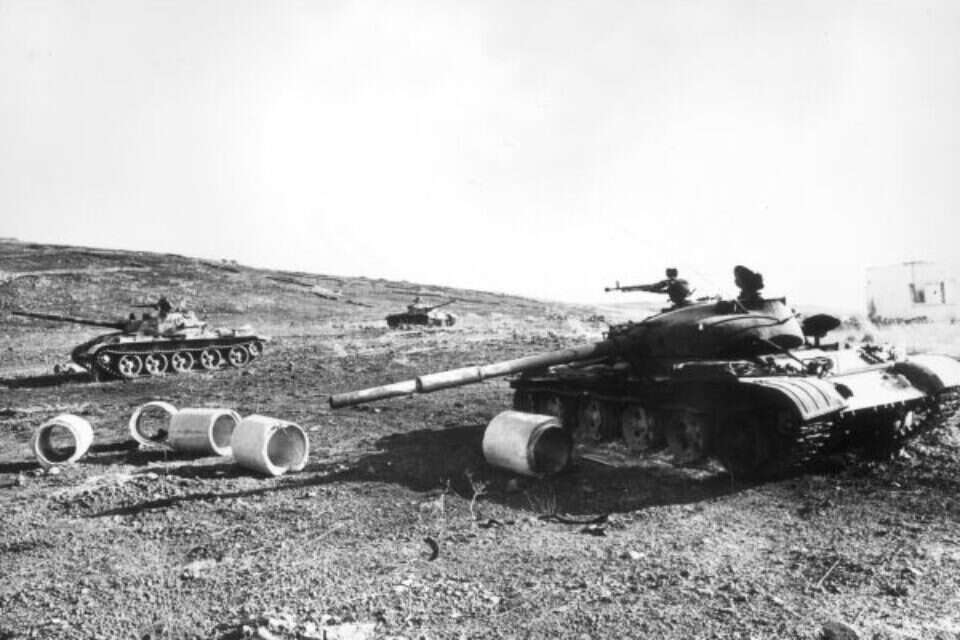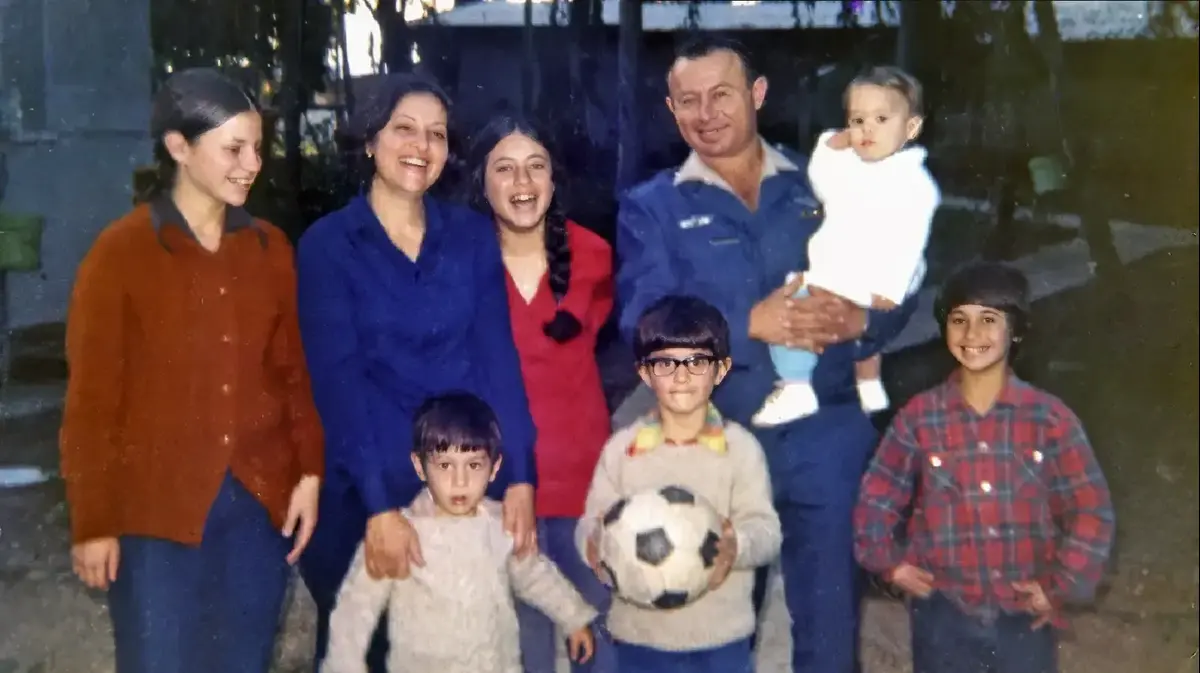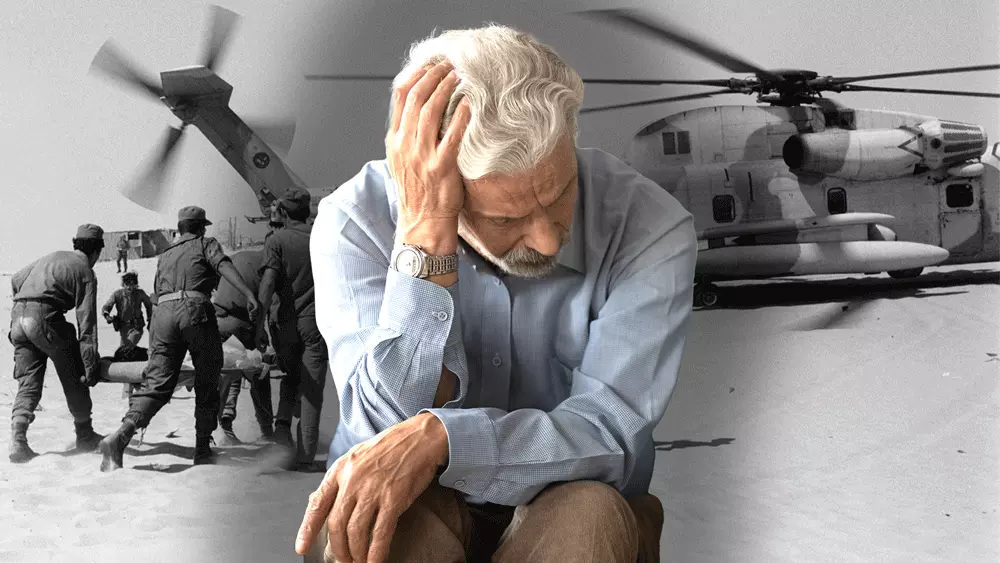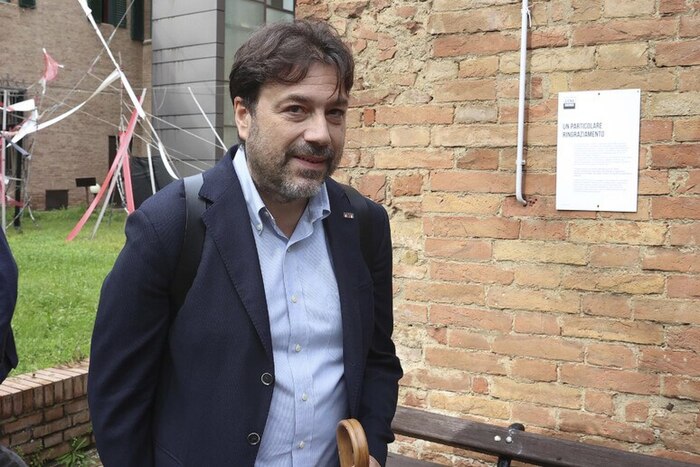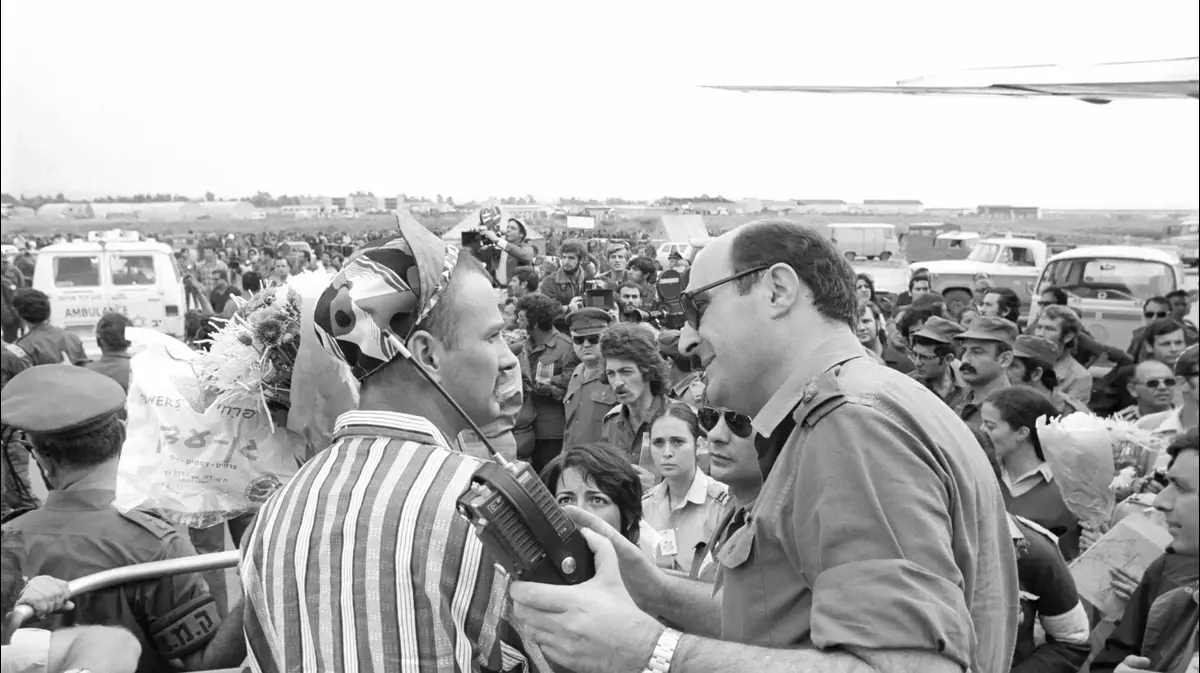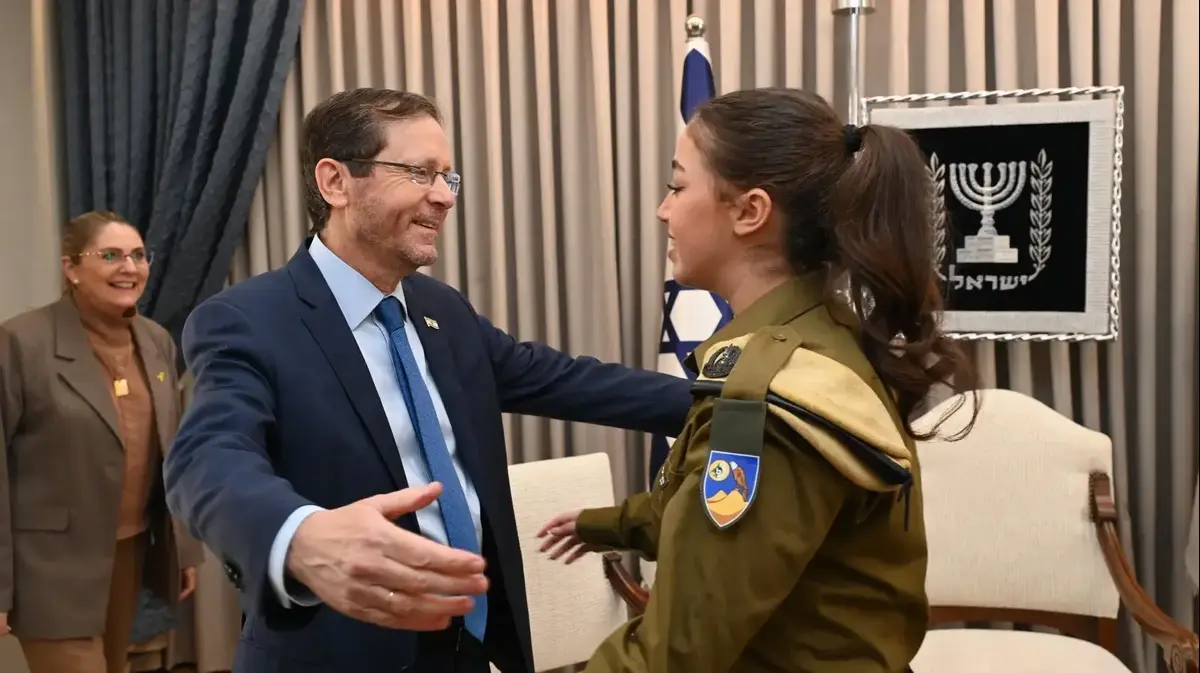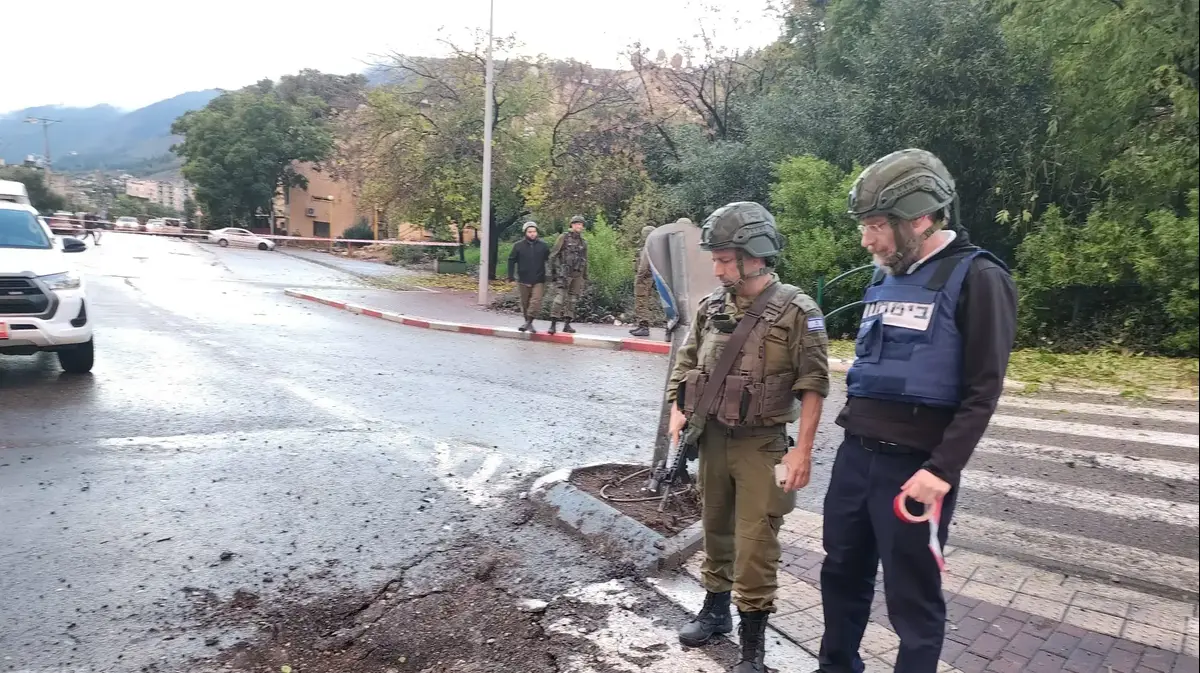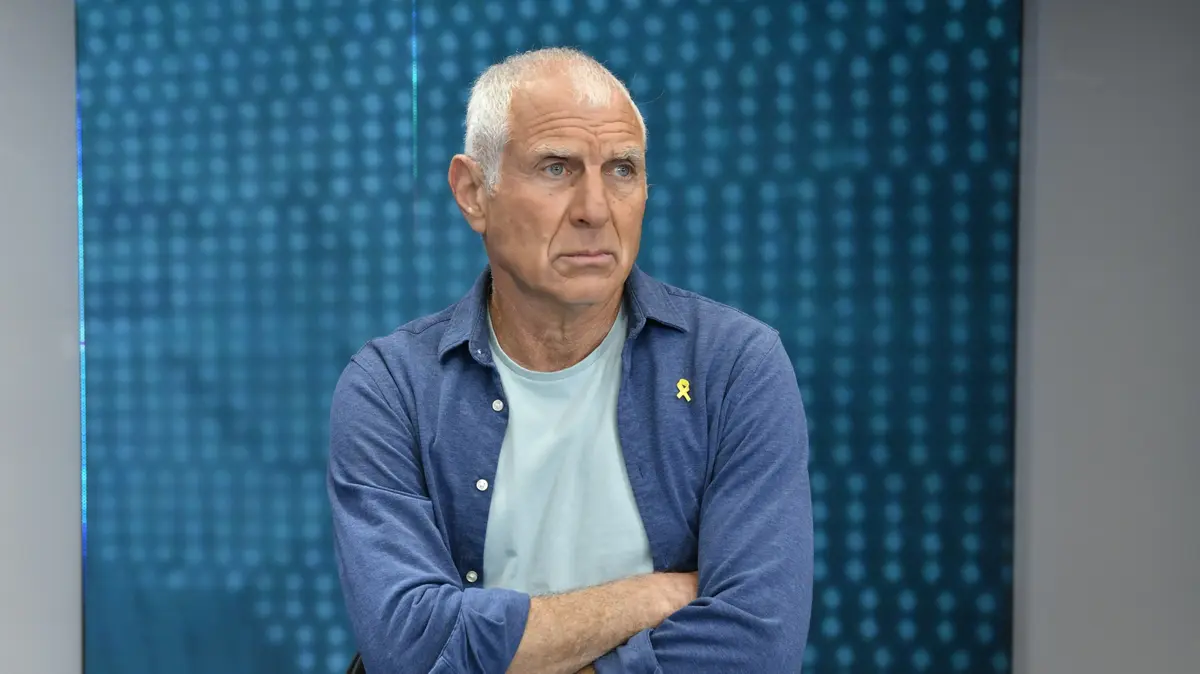In 1973, Eliezer Brilliant fought in the Yom Kippur War in the 179th Brigade of the Armored Corps.
There, in the battles on the Golan Heights, he became a tank driver and commander without being trained.
Now, when he is 75 years old, he meets with a fighter in the 7th Brigade in the Armored Corps.
Dan Zander (19) arrives at Brilliant's house in Kibbutz Shafiim to listen to his story, to try to distill, if at all possible, the legacy of the battle into a painting.
"I was a driver. I didn't take a tank commanders course. I never stood in a turret while shooting. I wasn't a gunner and I wouldn't load," says Brilliant.
"We crossed the Jordan in the north of the Sea of Galilee, at the Arik Bridge, and stood on the road in a line. We received an order to 'prepare to fire'. We are in the market, the Syrians near the Sea of Galilee. Then we climb the Yehudiya road and in the area of the Butchery intersection we encountered the Syrians. Full of Syrian tanks and APCs.
And shooting from all directions and screaming in connection.
And I see our tanks being damaged."
Zander and Brilliant, photo: Yossi Zeliger
Brilliant describes the moments when everything changed: "About two hours later I felt a hit, the whole tank was shaking. I stopped the tank and then smoke came in and I started suffocating. I went up to the turret, and there is no commander in the commander's cabin. I see the crew sitting stunned. I asked where the commander is. They say, he Wounded and got off the tank. And around war, and I remember the tank burning.
"I took water and put out the fire. Calm down, but what do we do now? A tank with three people - it was very complicated to function, but we decided that we had to continue. There was a motto: 'We need to save the people of Israel'. And we join everyone, even though there are three of us. The gunner, If he had the training of a tank commander, he would be the commander. If he sees a problem, he will enter the gunner's compartment and shoot, and that's how we function."
"The entire crew may have been killed"
He states that after about two hours another tank was hit, and a soldier who came to their tank escaped from it.
"We gave him a drink of water and calmed him down. We asked what his profession was, he said 'driver.' To be a commander? I didn't know how to be a gunner and I didn't know how to be a gunner, so I could only be a commander.
"But I was never a tank commander. I knew the commands by ear, and I knew how to lead a tank, and I did not lack self-confidence. We agreed that I would be a commander. From that moment, without any training and without any experience, I began to be a commander. This is a quite defining event. We began to fight As it should be, according to the book. With promotion to fire positions, with orderly fire orders. From that moment, and for another 20 years, I was a tank commander, and I also instructed in a commander's course. I'm not sure anyone knew that I didn't take a tank commander's course."
As a tribute to the warrior, Zander immortalized in a painting the moment when the soldier reached the tank and the three ordered him into the driver's cabin.
The moment Brilliant became commander.
Levi Sharafti and Tomer Abadi: "Iraqi planes fired at us"
It was in the Sinai sector.
Levi Sharfati (77) then fought in the battery to prevent the Egyptian army forces from occupying the Bar-Lev line posts.
French and Abadi, photo: Yossi Zeliger
In the midst of the Yom Kippur War, he served in the reserves as a medic in the artillery corps.
In a meeting with Tomer Abadi (19), an artillery fighter himself in the 411 Battalion, he recalled his home in Kiryat Ono in an effort to stop the Egyptian army, the attack of the Iraqi Air Force and the treatment of the wounded under fire.
Abadi listens to him, and tries to recreate the moments of the battle in a painting.
Ammo is over
"Our job was to shell our outposts so that the Egyptians could not enter them. The difficult drama was when we ran out of shells. We were a single battery without a command, we received orders from the General Staff.
We didn't have a doctor either.
We were two medics and a battery of 80 soldiers," says French about that day.
"Slowly the ammunition ran out, and we received a direct message from the soldiers at the outposts: 'Keep shooting, if you don't shoot we are lost.' One minute, then a shell in five minutes. The soldiers in the outposts begged us to continue shelling, and then it was over," he says.
A Frenchman also recalled how the commander of Division 143, Ariel Sharon, came to them at the battery.
"Ariel Sharon came to us with his jeep. He asked, 'Why did you stop shooting?' ran, because he had to get somewhere else. Sharon told him: 'You're not coming - I'll shoot you and take the truck.' , there was no more."
A Frenchman recounts in tears: "Then the outposts fell. It was very hard for us to know that they were falling because of us."
Later in the war, the French battery received ammunition, and was moved to another position.
"At 9:00 a.m. on October 13, two Iraqi planes arrived, looking for us and firing rockets at us."
A horror show
He adds: "All our ammunition exploded. It was a scene of horrors: we are trying to escape, and I hear calls of 'medic, medic.' And two more dead that we didn't see. They were on the trucks at the time of the explosion."
For his ferocity in treating the wounded under fire in the Yom Kippur War, Zarfati received a medal at the end. In the meeting between the two, Abadi commemorated the counting of shells by the soldiers of the battery in a painting. "From gunner to gunner", he writes in a dedication to Zarfati.
Amnon Kafkafi with Eyal Crispin: I felt like I was the only survivor"
In the middle of the battle in the Bakka Valley, Amnon Kafkafi was trapped inside the driver's cab.
The tank was hit by a shell and he went outside, seeing the Syrian army before his eyes.
In the Yom Kippur War he served regularly as a tank commander in the 7th Brigade of the Armored Corps in the Golan Heights.
At his home in Rosh Ha'Ain, when he was 70 years old, he met with Eyal Crispin (20), a fighter in the 7th Brigade and an armorer himself.
In the painting, he tries to recreate his story.
"When the war broke out, no one thought to call me, because who needs an educational NCO?
I arrived at an empty base.
In the hours after that, a few more guys started arriving.
The third was the only officer, and said to stay at the base.
I gathered a few guys, and in the end we were seven former tank commanders," says Amnon.
Flip flops with Crispin, photo: Yossi Zeliger
He recalled how he called his brother-in-law's headquarters and found out there was no way to take them, which made them hitchhike to the front.
"We set off without telling a third. We arrived at Camp Pilon, and we asked to know where the 82nd Battalion was. The answer we got was that there was no battalion. At some point we were told that there were tanks with malfunctions in Camp Naftali.
"We boarded the tank and reached the Tarzan axis. We saw a ramp with tanks on our left. We joined and shot with them. At some point the Syrians folded their tails and disappeared. And we are delighted, we won. Then we heard the brigadier on the phone: 'About 80 heavies will be with you soon.'
We looked up and saw clouds of dust and smoke from the tanks.
"It started to look like this business is not going to end well, because there are just so many of them. They explained that the Air Force is on its way. Planes arrive behind us, enter the area, pass over the Syrian tanks - and do nothing. I remember a sentence that was said: 'Let's show them who We were. Not who we are', that was the feeling."
The officer flew from the turret
During the fighting Amnon's tank was damaged.
"They fired another shell, which hit the tank itself and penetrated the turret. The whole tank literally rose up in the air. I was in the driver's cabin and flew forward. I was convinced that I was the only survivor, that we would soon receive another hit. I was trapped in the driver's cabin and I started getting burns on my hands. The steel is boiling.
"I managed to lift the shelf and went out in front of the entire Syrian army. There was a terrible shelling and shooting all around me.
"I met an officer who was with me in the tank. I said to him, 'Are you alive? How did you get here?', and he said, 'I don't know, I only know that I flew from the turret and fell to the ground.' The gunner came out of the opening. I said to him, 'Are you alive?', and he said, 'Yes.' I asked, 'What about Shalom?', he said, 'Killed.'
"At that time we had maybe three tanks left. When we were hit we thought we had lost this battle. Later it became clear to me that the Syrians ran away and did not try to pass us again. If they tried one more time - there was no one to stop them. But they didn't know that."
were we wrong
We will fix it!
If you found an error in the article, we would appreciate it if you shared it with us

